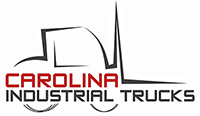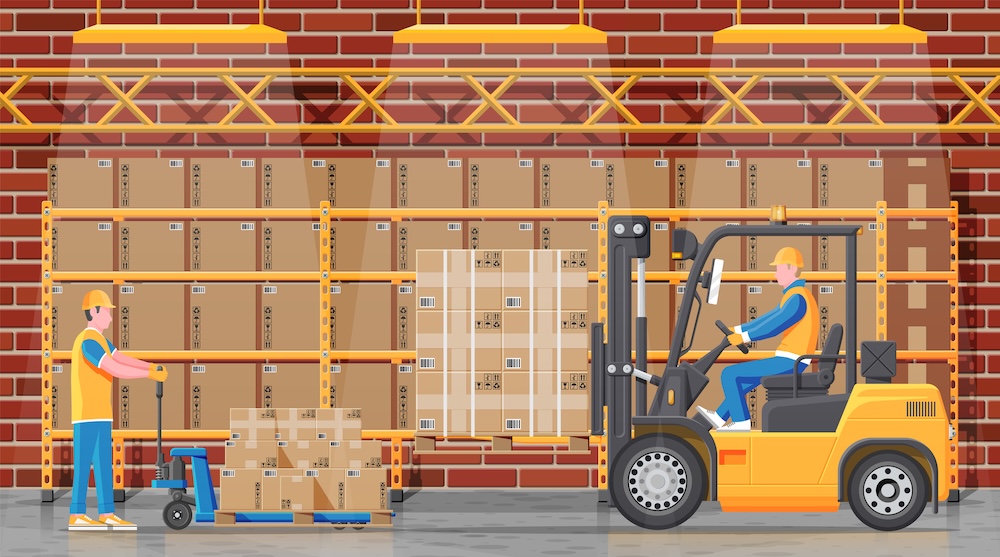The Ultimate Guide to Forklift Safety
06/25/2018
CITrucks
If you work, or are interested in working, in construction or the material handling industry, then you'll understand the importance of forklift safety. In this article, we'll review some of the most important forklift safety tips, so you can be ready to safely operate a forklift.
Have you recently started a position in the construction industry? Are you currently in training and working towards obtaining your license and certification to operate a forklift? If you're still learning how to operate a forklift, familiarizing yourself with forklift safety should be one of your top priorities.
Not sure where to start? That's OK, you've come to the right place.
1. Operators Must Be Qualified
If you're currently in training to become a forklift operator, you likely already know that many forklift accidents occur every year. These accidents can result in damages to equipment, property and products, and most importantly, personal injuries or even death. As difficult as it is to hear, many of these accidents result from driver error.
Knowing this, the importance of forklift drivers training class cannot be overstated. The only way to reduce the rates of these accidents is to ensure that all forklift drivers go through the proper training.
Forklift training not only reduces or eliminates accidents, but it also educates drivers about how to prevent tip-over accidents and other common occurrences.
By following the best practices that you learn in your safety training class, you can not only increase work proficiency and the life of your equipment - but decrease the number of injuries and damages, too. Whether you're forklift driver who is still learning, or an experienced operator, it never hurts to take another training class and refresh your skills.
2. Appropriate Clothing Is a Must
If you're operating a forklift, it's important to always wear reasonably fitting clothing, as loose-fitting garments can easily become caught on machinery.
In addition, you must also wear the necessary safety equipment, which may include a hard-hat, hi-visibility jacket, safety footwear, or a safety harness for some equipment.
3. Inspect Equipment Prior to Using It
Inspecting your equipment prior to using it is essential to both general workplace safety and forklift operating safety. Always check steering controls, brakes, tires, and warning devices to see if they have any issues. A visual inspection underneath the forklift for any obvious signs of leaks is also very important.
If you identify a problem, report it to your supervisor and ensure that the faulty equipment stays out of use until the necessary repairs are made.
4. Getting to Work
To get on (and off of) the forklift, always make use of its steps and handles. Be sure to adjust the seat position, armrest, and mirrors to the appropriate position for your needs.
Do not begin to operate the forklift until all parts of your body are safely inside of the equipment, you're in the correct position, and you have securely fastened your seatbelt.
5. Your Work Environment
Each construction site or warehouse is different, so it's important to take this into consideration and follow the safety guidelines and rules at each work site as specified.
If there are any warning signs posted, be sure to observe and follow them. Only operate the forklift on the designated pathways and pay attention to your surroundings.
6. Speed
Always follow speed limits posted at your work site and be careful to move slowly when turning a corner or going around a bend. Don't stop, start, or change the direction you are traveling suddenly.
7. Avoid Hazards When Possible
Of course, it's not always possible to avoid every hazard. However, there are some forklift safety rules you can follow to avoid the obvious ones.
If you notice bumps, holes, or uneven ground, avoid them at all costs. Steer clear of any loose material or other objects on the ground so that you don't lose control of the forklift or cause your load to shift.
When approaching a corner, bend, or in close proximity to other workers or pedestrians, use your horn to alert them of your whereabouts.
8. Secure Your Load
Before raising, lowering, or moving your load, check to ensure that it's stabled and well-balanced. To increase the truck's stability, make sure that the forks are low and that the load is tilted back as much as is safely possible. This is rule number one in lift truck safety.
When stacking, lifting, or lowering a load, always keep an eye out for potential obstructions and be aware that the load could fall off the forklift.
9. Ensure Clear Visibility
When positioning a load, be sure that you can clearly see the rack.
If the load you're carrying is restricting visibility, travel in reverse on your forklift. Don't travel in reverse if you're going up a ramp, though.
If you're still struggling to obtain clear visibility, stop what you're doing and confirm with someone on the work site that you're in the clear to proceed.
10. Steer Clear of the Mast
No one should walk under a forklift with the forks in the raised position, especially if it's bearing a load. The load could fall and cause a serious injury or possibly even result in death.
Keep your hands and feet away from the cross members, as you could sustain an injury if your hands and/or feet are on it while the mast is lowered.
11. Don't Exceed the Capacity of Your Equipment
Before using a forklift, be sure to know its capacity and the capacity of any attachments you're using. Do not exceed this capacity, as you could damage the equipment and possibly injure yourself or someone else who's working on the site.
Overloading the truck may cause its rear wheels to raise off the ground, causing it to tip over.
12. Evenly Distribute the Load
Don't move or lift any loads unless both forks are in place and properly positioned underneath the load. Never lift a load using only one fork.
Always find a pallet or skid that can bear the weight of the load before lifting it. Never use a damaged or decaying pallet or skid to lift loads.
Practice Forklift Safety with These Forklift Tips
While it may seem like there are a lot of rules regarding the operation and use of forklifts, they're in place for the safety of operators and others on the work site. Once you have completed the OSHA certified test, forklift operators will need to renew their license every 3 years.
To ensure forklift safety, refer to this guide until you feel confident operating site equipment. If you have any further questions, please contact one of our certified forklift training instructors.





